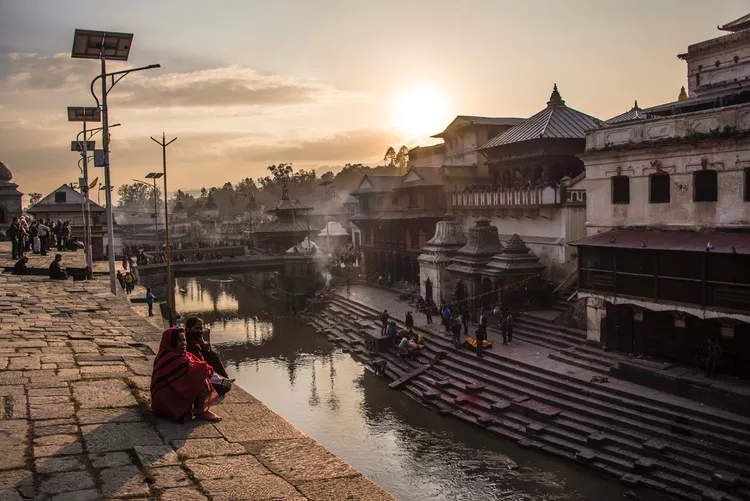Overview of Pashupatinath Temple
Introducing Pashupatinath Temple
For travelers on the Indian subcontinent, the mention of cremation typically brings Varanasi to mind. This Indian city is historically renowned as a prominent cremation site for Hindus. However, modern Varanasi serves both as a tourist hub and a faithful pilgrimage destination, combining rich mythology with the rawness of reality along the scenic Ganges River.
Moreover, Varanasi is not always convenient for visitors, considering the challenges that often accompany travel within India. If your goal is to witness the Hindu cremation practices against a picturesque riverside backdrop, Pashupatinath offers a more accessible alternative, located just outside the center of Nepal’s bustling capital, Kathmandu.
History, Architecture, and Controversy
It’s essential to clarify the significance of Pashupatinath. Although the complex is expansive, the main two-story temple is where the story truly begins. This remarkable structure dates back to the 1600s when Lichhavi King Shupuspa commissioned its construction to replace an older version being consumed by termites. The temple’s history spans nearly 2,500 years and centers around the deity Pashupati, known as the Lord of the Pashus. Other notable structures within the complex include the Vasukinath Temple and the Surya Narayan Temple with Hanuman Shrine.
Significantly, Nepal’s history witnessed a dramatic shift in 2001 when the country’s royal family was tragically murdered, leading to the establishment of a Maoist government. The repercussions of this event affected Pashupatinath directly eight years later when the government appointed Nepalese priests in place of the traditional Bhatta priests. Although legal measures later restored the Bhatta, this incident left an indelible mark on the temple’s legacy.

The Key Difference Between Pashupatinath and Varanasi
Pashupatinath and Varanasi both serve as significant sites for Hindu cremation rites, as Hindus believe the practice releases the body back into its five elements. Each site is adjacent to a river and situated within large urban centers. Consequently, the key distinction is that Varanasi is regarded as a destination where Hindus come to die and be cremated, whereas Pashupatinath serves primarily as a site for cremation itself. Moreover, Pashupatinath attracts fewer tourists, likely due to its lesser-known status despite being more accessible than Varanasi.
How to Visit Pashupatinath
One of Pashupatinath’s most appealing features is its proximity to Kathmandu’s city center, lying less than three miles from Thamel, a popular area for tourists. Furthermore, Pashupatinath is even closer to Tribhuvan International Airport, making it convenient to visit immediately upon arrival in Kathmandu before heading to your accommodation.
However, it’s worth noting that travel times may vary; traffic in Kathmandu can contribute to journey durations of up to an hour. Pashupatinath is recognized as a UNESCO World Heritage site and is currently undergoing renovations following the 2015 earthquake, with an entrance fee of 1,000 Nepalese rupees, roughly $10.
A great way to enhance your visit is to combine Pashupatinath with a trip to the nearby Boudhanath Stupa, known as Boudha. The ethereal smoke rising from Pashupatinath is particularly breathtaking at sunset. Therefore, allow the twilight to envelop you there before heading to Boudha after dark, when the stupa illuminates in a dazzling array of colors.





